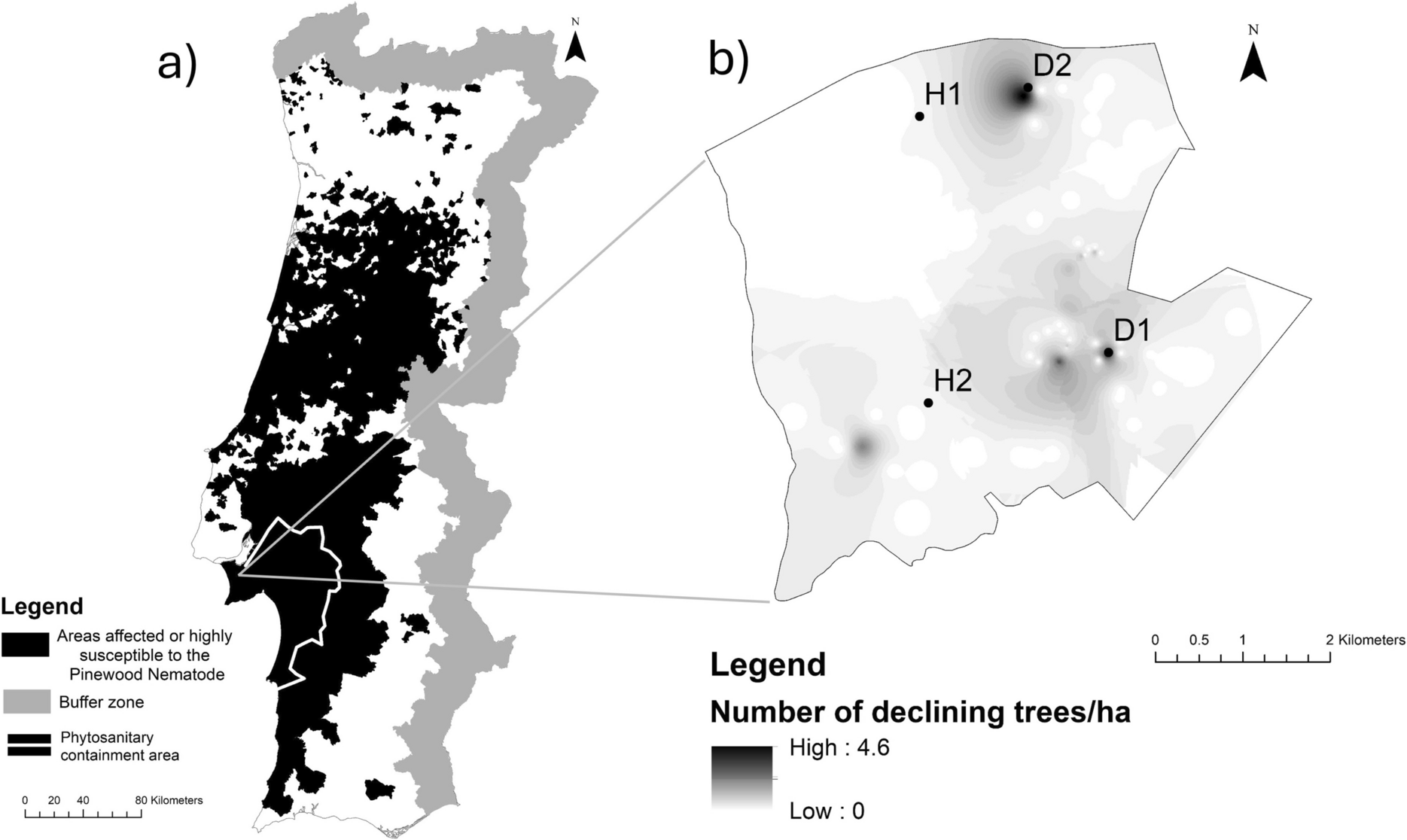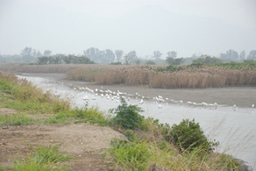Multiple factors associated with forest decline in the context of control measures for the pinewood nematode
Published in Plant Science and Agricultural & Food Science

Forest decline is rarely straightforward. Yet when trees begin dying across landscapes, the tendency is often to blame a single culprit. Our recent study, "Multiple factors associated with forest decline in the context of control measures for the pinewood nematode," shows that this simplification can mask a much more complex reality.
The pinewood nematode (PWN, Bursaphelenchus xylophilus) was first detected in Portugal in the 1990s, the first report of this pathogen in Europe. Since then, pine wilt disease (PWD) has been largely attributed to the nematode, prompting strict national containment and management measures. While these have been essential to prevent spread, pine decline has persisted and even expanded, raising an important question: are we missing other drivers behind the phenomenon?
The Portuguese pine forest landscape has long faced multiple pressures. Decades of intensive management, recurrent droughts, rising temperatures, and frequent wildfires have created a setting of chronic stress. In such conditions, trees become more vulnerable to pests and pathogens, setting off decline processes that a single factor cannot explain.
A landscape-level approach
To better understand this complexity, we used a physiographic approach, integrating biological, environmental, and topographic data in a highly managed pine production forest where PWN control measures have been in place for decades. We assessed:
- Environmental and topographic variables, such as elevation, slope, and water availability;
- Biological agents, including fungi and insects;
- Presence and density of the PWN in both symptomatic and asymptomatic maritime pines (Pinus pinaster), as well as stone pines (P. pinea).
This holistic view allowed us to explore how abiotic and biotic factors interact to shape forest decline patterns.
Key findings
Our results revealed that pine decline was not randomly distributed but aggregated across the landscape, closely linked to areas of lower water availability. Indeed, water stress emerged as a major predisposing factor, with drought-prone sites showing higher rates of decline.
We also found that wilting trees were often affected by multiple biological agents, not only B. xylophilus. The coexistence of various pathogens and pests suggests that forest decline results from complex ecological interactions rather than a single cause.
Perhaps most strikingly, the PWN was detected in asymptomatic P. pinaster trees, suggesting an ability to persist in apparently healthy hosts, at least for short periods of time. This challenges the traditional view of the nematode as an immediate, lethal agent and points to a subtler relationship between the pathogen, the host, and environmental stress. As expected, the PWN was not detected in any sampled P. pinea trees.
Rethinking PWD management strategies
Portugal's PWD management strategy has focused largely on containment: removing infected trees, restricting timber movement, and monitoring nematode spread. While necessary, these actions overlook broader landscape processes that contribute to vulnerability.
By concentrating on eradicating one pathogen, we risk ignoring the environmental context that allows decline to develop. Soil degradation, drought stress, low species diversity, and recurring disturbance all weaken forest resilience.
Our findings highlight the need for a more holistic and adaptive management framework that:
- Incorporates water balance and topography into site planning;
- Encourages mixed-species or structurally diverse stands;
- Monitors co-occurring pests and pathogens;
- Integrates ecological and climatic data into decision-making.
Pine decline in Portugal illustrates a broader challenge faced by managed forests worldwide: simplified ecosystems are highly vulnerable to disturbance. In this context, the PWN is not merely a cause but also a symptom of a fragile system. Addressing this fragility requires shifting from reactive, pathogen-centered control to proactive resilience-building.
With this study, we aimed to clarify the role of B. xylophilus in pine forest decline. What we discovered was that the nematode is only one piece of a larger ecological puzzle. Recognizing this complexity is essential for developing management practices that sustain forest ecosystems, not just by fighting a single pathogen, but by strengthening the entire system against the many challenges it faces.
Follow the Topic
-
European Journal of Plant Pathology

European Journal of Plant Pathology is an international journal presenting comprehensive plant pathology research.



Please sign in or register for FREE
If you are a registered user on Research Communities by Springer Nature, please sign in
Very interesting perspective!
As this type of problem would be perceived in agroecology here in Brazil, the nematode is not the cause, but a symptom of a more complex or systemic problem. We would commonly say that the system is sick, creating conditions for ecological imbalances — such as pests, invasive species, etc. — to take hold.
See if what I say next makes any sense.
When considering a set of factors, such as soil degradation, water stress, and low species diversity, which are considered to be contributing factors to the problem, I think this is the case.
So, I wonder if removing affected trees would be a palliative solution or induce positive feedback by contributing to the reduction of vegetation cover and, therefore, of the system that regulates infiltration and evapotranspiration, in addition to exposing more soil.
In addition to palliative measures, would it be interesting to adopt management actions aimed at promoting a richer and more functional ecological structure, as is done in agroecology, especially in the case of agroforestry?
These approaches have been shown to promote an enrichment of ecosystem services, such as soil quality and function, water availability and biodiversity enrichment, i.e. the same factors mentioned as problems in the text.
Perhaps agroecology approaches can contribute to other fields, such as the management of natural ecosystems.
Does this make sense?
Thank you, Leon, I really appreciate your perspective.
I agree that pine wilt disease reflects deeper ecological imbalances. The parallel with agroecology is spot on, though translating those principles to forest systems can be tricky, given the phytosanitary measures that require tree removal and containment.
Your point about feedback loops is also very relevant: reducing canopy cover in drought-prone areas can intensify water stress, which our study also highlighted. That's why adaptive, landscape-level management, integrating hydrology, diversity, and structure, is so important.
And I completely agree: approaches from agroecology can inspire more resilient forest management, especially when we think beyond pathogen control toward restoring ecological function.
Dear David,
Thank you for your comments and considerations!
If it makes sense, consider the following:
In terms of how an area is typically restored through agroecological approaches, it is important to understand ecological succession in the managed area.
Using this knowledge and the different species identified for each stage of succession, it is possible to promote the density and diversity necessary to restore or build a dynamic and functional vegetation structure.
In this way, it is hoped that the health of the system will arise as an emergent property, improving as the system matures.
I wish you every success in your project!